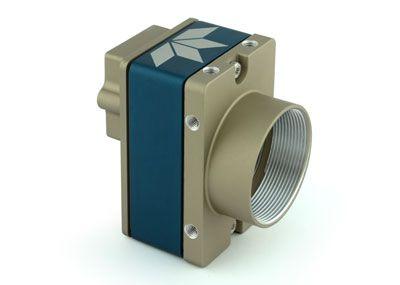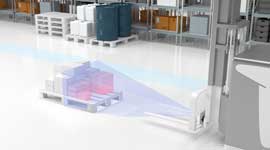GigE Vision camera with double high data transfer rates for the industry
- Details
- Hits: 4436
 Teledyne Dalsa (Distributed by Stemmer Imaging), the GigE Vision camera for industrial image processing, "Genie Nano", offers a range of functions that increase performance while reducing complexity and costs. The set of camera modes combines unparalleled image processing with data transfer rates beyond the GigE limit. An extended operating temperature range is available to the user in a small and lightweight housing.
Teledyne Dalsa (Distributed by Stemmer Imaging), the GigE Vision camera for industrial image processing, "Genie Nano", offers a range of functions that increase performance while reducing complexity and costs. The set of camera modes combines unparalleled image processing with data transfer rates beyond the GigE limit. An extended operating temperature range is available to the user in a small and lightweight housing.
Presentation of the camera
Sony's popular Pregius IMX174 and IMX249 color and monochrome CMOS sensors offer high image quality with exceptional data acquisition and transfer rates. Burst and Cycling mode and multi-ROI make it faster to capture image data. The turbo-drive technology allows transfer rates that go far beyond the transmission rates possible with GigE Vision. All the usual advantages of Gigabit Ethernet technology are still available such as the data transfer over standard CAT 5e and CAT 6 cables over distances of up to 100 m. This powerful combination makes inspection tasks much faster.
The pixel analysis and data processing method for image coding of turbo drives enables data transfer rates that are 2 times higher than the transfer rates of standard GigE Vision solutions, depending on the image. The field-proven "Trigger to Image Reliability" guarantees a reliable recording control during the entire image capture process and image processing without data loss.
 Vision Sensor solves many tasks in factory automation
Vision Sensor solves many tasks in factory automation
Thanks to multi-ROI, up to 16 ROIs can be defined and the read-out of image data can be limited to the important object areas. This reduces the processing time and frees up computing capacity. In burst mode, image data beyond the GigE bandwidth limit can be captured at the maximum frame rate of the sensor and cached in the main memory of the camera. The stored data is transmitted only during idle times, for example, when the conveyor belt moves forward with the objects to be inspected and no images are taken.
Cycling mode offers tremendous data processing flexibility. With each image of a sequence, it can be used to set the settings for different light sources, lighting angles, shutter speeds, gain, and more, giving you more information in a single pass with a single camera. For example, with different lighting settings for inspection of the same object, the error detection and thus the production reliability can be significantly improved without having to use complex external components.The Cycling mode allows a single genius Nano to transfer a large amount of image information in a single pass, which is otherwise only possible with great effort through the use of multi-camera systems or combinations of camera and frame grabber. With its extended temperature range from -20˚ to + 60 ˚C, the camera can be used in extremely harsh environments.
